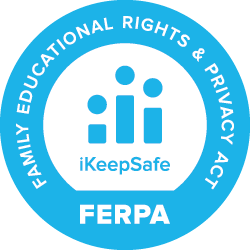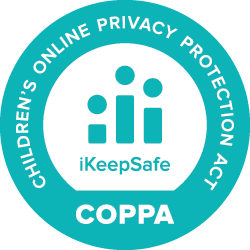Fashion Show
We often take the materials in our clothing for granted. We think about color, texture, or the way clothes help us be comfortable in hot or cold weather, but we seldom think about the raw materials needed to make our clothing both practical and stylish. In this activity, you will test and compare the properties of natural, synthetic, and recycled synthetic fabrics... with surprising results.
Facilitation Tips and Potential Student Answers
Be sure to scroll to the bottom of the Educator Overview until you see STUDENT CONTENT BELOW THIS LINE. Interleaved in the Student Content section, you will see educator facilitation tips and potential student answers displayed in red, italic text when applicable.
Activity Title:
Fashion Show
Description:
We often take the materials in our clothing for granted. We think about color, texture, or the way clothes help us be comfortable in hot or cold weather, but we seldom think about the raw materials needed to make our clothing both practical and stylish. In this activity, you will test and compare the properties of natural, synthetic, and recycled synthetic fabrics... with surprising results.
Target Grade Level:
Grades 9 - 12
Discipline or Course (Audience):
Science, Chemistry
Time Frame:
Two class periods (90 minutes) without extensions
Suggested Grouping:
Groups of 3-4
Key Vocabulary:
Fabric, SDS (Safety Data Sheet)
Educator Prep:
For thousands of years, humans have created clothing from plants and animals. Fabric-making technology has varied across time and location, producing useful and beautiful objects. The properties of some cellulose-based fabrics (such as linen, hemp, and cotton) have been modified through plant breeding over time, and some of these plants now have genetically engineered variants. Synthetic fabrics, common today, are often made from non-renewable resources such as oil. Recycling those materials to make new products becomes more important as the raw materials become more difficult and expensive to obtain.
The question which directs the student activity, “What is the difference…” is deceptively simple on the surface because the answer is often “none.” Synthetic fabrics have very specific advantages over natural fabrics (for example, wrinkle or stain resistance.) These advantages are about the same, whether the fabric is made from raw materials like oil or from recycled polymer units.
A specific property of a fabric may or may not be appealing to consumers. Some people prefer a wrinkle-resistant fabric like polyester, while others may prefer the natural look or feel of linen or raw cotton. An extended discussion of what constitutes “fashion” is appropriate to the lesson, with a healthy respect for diversity. The key concept that students should gain from this lesson is that there is no generic difference between synthetic fabrics made from primary sources (i.e., oil) and those made from recycled materials (such as plastic bottles.)
By the end of the activity, students should be able to:
- Perform lab activities with measures in place to ensure fair tests and valid results.
- Identify the properties of each fabric sample and consider traits that may make a fabric more valued over another.
- Compare and contrast natural materials and synthetics, and primary synthetic fabrics and recycled synthetic fabrics, and discuss possible reasons for the differences.
- Identify a mystery fabric sample based on evidence.
Activity Preparation Directions:
- Collect samples of fabrics that are approximately the same size and color, with labels indicating that some are made of natural fibers, some of synthetic fibers, and some of recycled synthetic fibers.
- SDS (Safety Data Sheets) should be available for all chemicals. Be sure to review safety procedures with the students anytime chemicals are in use.
- Give each group of students 4 samples of fabric. They should each have a labeled sample of a natural, synthetic, and recycled synthetic material as well as an unlabeled fabric they will need to identify.
Remote Learning Adaptations:
This activity is not appropriate for remote learning.
STUDENT CONTENT BELOW THIS LINE
For thousands of years, humans have created clothing from plants and animals. Natural fabrics are made from protein fibers (like wool or silk) or complex carbohydrates like cellulose (such as linen and cotton). Fabric-making technology has varied across time and location, producing useful and beautiful objects. In the recent past, new fabrics have been developed such as rayon, nylon, and polyester, and crops that humans have cultivated for millennia now have genetically engineered variants.
Synthetic fabrics can be made from raw materials like petroleum, and they can also be created from recycling plastic objects like water bottles. Polyethylene Terephthalate, or PETE, is used to make many common household items like beverage bottles, medicine jars, peanut butter jars, combs, bean bags, and rope. Recycled PETE is used to make fabrics and carpets.
In this activity, you will test and compare the properties of natural fabrics, synthetic fabrics, and recycled synthetic fabrics.
Materials:
- Device with internet access
- Supporting Material - Student Data Sheet: Fashion Show
- 4 samples of fabric (1 natural, 1 synthetic, 1 recycled synthetic, 1 unknown)
- Goggles for eye protection
- Eye droppers
- Forceps
- Iron
- Dark coffee
- 50/50 laundry detergent solution/water
- bleach
- water
- isopropyl alcohol
- dilute acetone
- thermometer
- heat lamp
- single hole punch
- 4 microchemistry test plate (dish with 3 separate cells)
Safety Notes:
- When using technology, engage in safe, legal, and ethical behavior; this applies to devices (hardware), applications or programs (software), and interactions with others.
- Wear your googles while performing all of the tests.
- Use caution when working with chemicals and with heat lamp. SDS (Safety Data Sheets) should be available for all chemicals. Be sure to review safety procedures anytime chemicals are in use.
- Follow all safety precautions as directed by your teacher.
Part 1: Collect Data
- Before beginning, consider what procedures you will need to have in place to ensure that your tests are fair and your results valid. Read through the tests you will be performing and discuss some of these measures with your teammates.
- Perform the tests! Record your data using Supporting Material - Student Data Sheet: Fashion Show .
Wrinkle-Resistance
- Crush each sample of fabric into a ball.
- Place the crushed fabric under a stack of books for 5 minutes.
- Remove and record your observations.
Strength
- Develop a test to compare the durability of your samples.
- Use firm clamps to attach them to a spring scale or pressure probe. Add masses or pull until the fabric distends or tears. (Make sure you use an objective measure to mark the “end point” of this measurement.)
- Record it on the chart below.
Heat Resistance
- Use a commercial iron or (hair) curling iron to compare the heat resistance of your samples. Chose one or two settings (low vs. high)
- Note any changes in the fabric, such as scorching or melting.
- Record any changes.
Resistance to De-Colorization
- Put one drop (~1/20 ml) of commercial liquid bleach on each sample.
- Record any de-colorization.
Solvent Reaction
- Used the hole punch to make three 2mm dots of each fabric.
- Place each sample in a microchemistry test plate.
- Add into each of the different wells several drops of one of the solvents (water, isopropyl alcohol, and acetone). Do not mix the solvents. Each well should contain one solvent.
- Observe and record any sign of the fabric sample being destroyed, dissolved, or distorted.
Insulation Capacity
- Note the start temperature in degrees Celsius.
- Take the large piece of each fabric and use it to wrap the end of a temperature probe or alcohol thermometer.
- Expose all of the samples simultaneously to heat lamp or to another heat source for two minutes.
- Record the change in temperature over time.
- Rank the fabrics (high to low) with respect to their capacity to help the wearer maintain temperature control.
Stain Resistance
- Put two drops of concentrated coffee on each piece of fabric.
- Allow drying.
- Wash the fabric using diluted laundry detergent and water.
- Was the stain removed? Record your results.
Reflect and Apply
- Think of each property that you measured. Were any of them more important than others when determining the value of the fabric? This will differ with each group. Depending on the geographic location, the age range, the economic capacity of the consumer, the properties will take on different priorities.
- Were there generic differences between natural materials and synthetics? What properties of synthetic fabrics might explain these differences? In general, synthetics have more resilience and strength. But genetic engineering has enabled consumers to get wrinkle-resistant cottons, color-fast linens, etc.
- Were there differences between primary synthetic fabrics and recycled synthetic fabrics? How would you explain these differences? In general, recycled materials have the same values/properties as primary synthetics made from oil or other materials.
- Were you able to determine the identity of your mystery fabric? Support your conclusion with evidence. Answers will vary.
Extensions:
- When people shop for clothing, they seldom think about the way the item will wash or resist wrinkles. Instead, they think about how they will look. But it’s vitally important that we reuse and recycle. Develop a short video advertisement that features the popular appeal of a fabric and sells recycling at the same time.
- Research the global development of fabrics from around 4000 B.C.E. to the invention of denim. Include in the timeline the qualities and properties that made each of the fabrics useful and valued.
- Journal Question: Each year, humans use billions of plastic water bottles. This plastic can be used for new fabrics, and chemical engineers can design processes that address the specific needs of various vendors—strength, versatility, stain or wrinkle resistance, ability to absorb interesting dyes or to take on unique textures. If this is the case, why do we still use so many natural and synthetic primary fabrics? How do you predict this might change in the future? Who are some of the stakeholders that would be affected?



